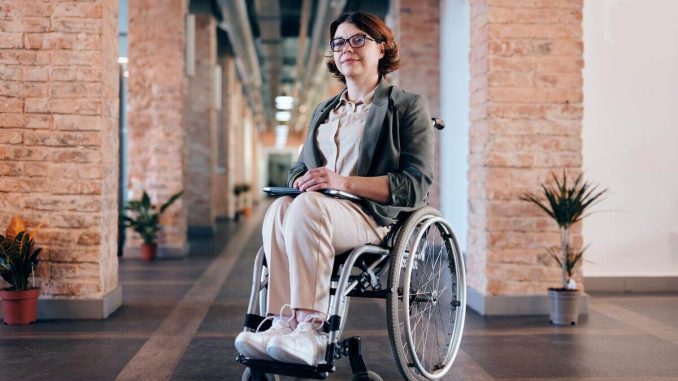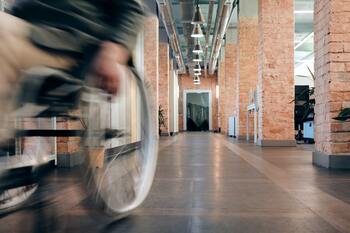
In today’s world, inclusivity and accessibility have become fundamental values in society. One crucial aspect of inclusivity is wheelchair access, which ensures that individuals with mobility challenges can navigate public spaces with ease and dignity. In this comprehensive guide, we will explore the importance of wheelchair access, the benefits it offers, and practical solutions to create an inclusive environment for everyone.
 Understanding Wheelchair Access
Understanding Wheelchair Access
Wheelchair access, often referred to as accessibility or barrier-free design, encompasses the design and modification of public spaces to accommodate individuals who use wheelchairs or have mobility impairments.
It is a critical element of universal design, which aims to make environments accessible to people of all abilities.
Key Elements of Wheelchair Access
- Ramps and Elevators: Installing ramps and elevators provides wheelchair users with alternatives to stairs, ensuring access to different levels of buildings.
- Wider Doorways: Widening doorways allows wheelchair users to enter and exit buildings or rooms without difficulty.
- Accessible Restrooms: Equipping restrooms with accessible features such as grab bars, lower sinks, and accessible stalls ensures that wheelchair users can use them independently.
- Accessible Parking: Designating parking spaces close to entrances and providing accessible pathways to entrances make it easier for individuals with mobility challenges to access buildings.
- Adaptive Seating: Offering seating options that accommodate wheelchairs, such as spaces with removable or adjustable seats, ensures inclusivity in public spaces.
- Visual and Tactile Signage: Clear and easily readable signage, along with tactile indicators, assists individuals with visual impairments in navigating public spaces.
Importance of Wheelchair Access
- Promoting Inclusivity: Wheelchair access ensures that individuals with mobility challenges are not excluded from participating in everyday activities and accessing essential services.
- Respecting Dignity: Wheelchair access helps maintain the dignity of individuals with disabilities, allowing them to move independently and with confidence.
- Legal Compliance: Many countries have laws and regulations that mandate wheelchair access in public spaces to ensure equal rights and opportunities for all citizens.
- Enhancing Business: Wheelchair-accessible businesses and public spaces can attract a broader customer base, increasing revenue and reputation.
Benefits of Wheelchair Access
- Improved Mobility: Wheelchair access eliminates physical barriers, enhancing mobility for individuals with disabilities and reducing their dependence on others.
- Inclusive Social Participation: Accessible public spaces allow individuals with mobility challenges to engage in social and community activities, fostering a sense of belonging.
- Better Health Outcomes: Access to healthcare facilities and wellness programs becomes more attainable, promoting better health and well-being.
- Economic Opportunities: Individuals with disabilities can access education, job opportunities, and contribute to the workforce, benefiting the economy.
Practical Solutions for Wheelchair Access
- Accessible Ramps: Install ramps with the appropriate slope and handrails at entrances to buildings. Ramps should be wide enough to accommodate wheelchairs comfortably.

- Elevator Access: Ensure that elevators are wheelchair-accessible and equipped with clear signage in Braille and tactile buttons.
- Accessible Parking: Designate accessible parking spaces close to building entrances, ensuring they are properly marked and have ample space for wheelchair users to enter and exit vehicles.
- Wide Doorways: Widen doorways to at least 32 inches to allow easy passage for wheelchairs.
- Accessible Restrooms: Modify restrooms to include accessible stalls, lowered sinks, grab bars, and tactile signage for individuals with visual impairments.
- Flooring: Use smooth and slip-resistant flooring materials to make it easier for wheelchairs to maneuver.
- Visual and Tactile Cues: Incorporate visual and tactile cues such as textured flooring, contrasting colors, and audible signals at crosswalks to assist individuals with visual or auditory impairments.
- Accessible Seating: Provide adaptable seating options in public spaces, such as theaters, stadiums, and waiting areas, to accommodate wheelchairs.
- Education and Training: Train staff in providing assistance and support to individuals with disabilities, ensuring they have the knowledge and empathy to assist as needed.
- Regular Maintenance: Maintain accessible features regularly to ensure they remain in good working condition.
Legislation and Regulations
Many countries have enacted legislation and regulations to ensure wheelchair access and inclusivity. Some examples include:
- Americans with Disabilities Act (ADA): In the United States, the ADA mandates accessibility requirements for public spaces, buildings, and services.
- Equality Act 2010 (UK): In the United Kingdom, the Equality Act 2010 sets out legal requirements for accessibility and inclusion in various areas, including public spaces.
- United Nations Convention on the Rights of Persons with Disabilities: This international treaty, adopted by the United Nations, outlines principles and obligations for accessibility and inclusivity.
Conclusion
Wheelchair access is a fundamental aspect of creating inclusive and accessible public spaces. It not only promotes mobility and independence for individuals with disabilities but also fosters a more inclusive and equitable society. Ensuring wheelchair access benefits everyone, as it creates environments that accommodate diverse needs and abilities. By prioritizing accessibility and adhering to regulations, we can take significant steps towards a world where everyone can enjoy equal access and opportunities.

Leave a Reply